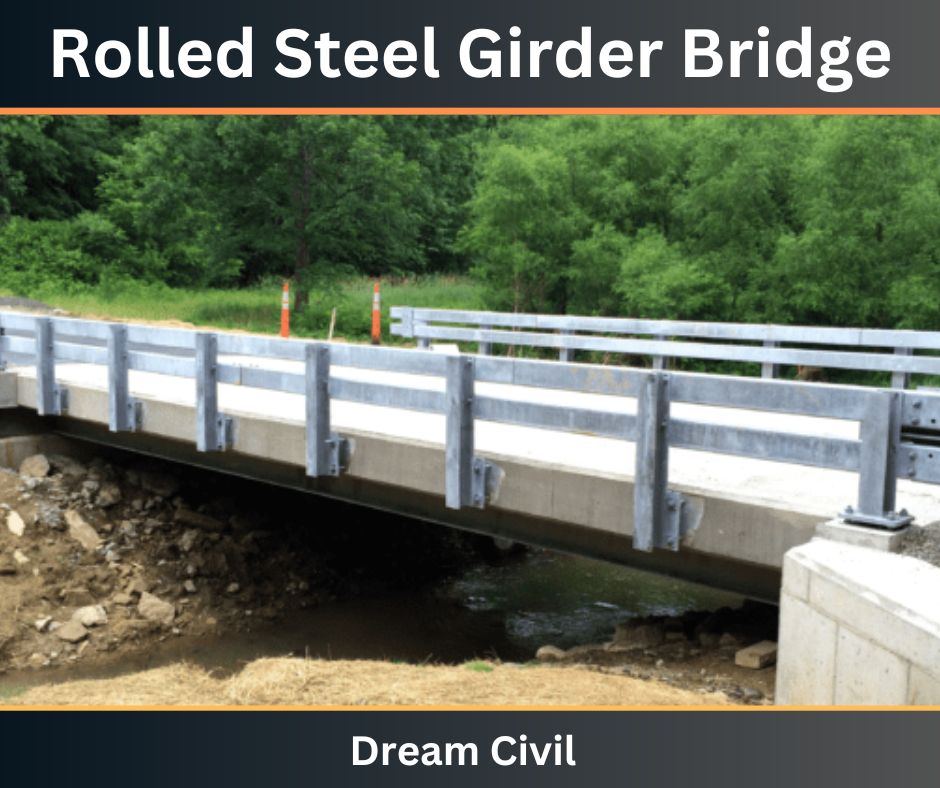Table of Contents
The bridge in which girders are used for supporting its deck is called the girder bridge.
Such girders can be either rolled steel girders or box girders.

This bridge functions by transferring the load coming from the deck to the piers and the abutments through the girders.
This bridge is quite similar to the beam bridge.
Most commonly, the girders are constructed using steel and concrete.
1. What Are The Components Of The Girder Bridge?
A girder bridge essentially consists of the superstructure and the substructure.
The superstructure refers to the visible part of the bridge that provides support to the loads whereas the substructure includes the foundation that transfers the loads coming from the superstructure to the underlying ground below.
There must be a proper balance and coordination between the sub-structure and the superstructure to function efficiently and also to last for a longer period.

The superstructure of the girder bridge mainly consists of the following components:
Deck:
The deck refers to the roadway or the walkway of the girder bridge.
Mostly, the deck may be made up of steel grids, wood planks, or reinforced concrete slabs.
The deck mostly includes the road lanes, medians, sidewalks, parapets or railings, and miscellaneous items like drainage and lighting.
Supporting Structures:
The superstructure of the girder bridge contains supporting structures of steel or concrete that support the deck. These structures mainly include the girders, diaphragms or cross-braces, and sometimes even the truss or arch system.
Girders and bracing are the most commonly adopted supporting structures.
In such a system of girders and bracing, the girders act as the primary load support whereas the bracing prevents the beam from toppling.
Bearing Pad:
The bearing pad permits the superstructure to move slightly independently over the substructure.
The objective of allowing such movement of the superstructure is to prevent the development of unnecessary stress and failure of the structure by the structural expansion and contraction due to temperature variations.
The substructure of the girder bridge mainly consists of the following multiple parts:
a. Abutment:
An abutment is part of the substructure that transfers the load coming from the superstructure of the bridge to the underlying ground. It is also referred to as the foundation of the bridge.
b. Cap:
The cap provides support to the bearing pads. It is provided based on the support type.
Mostly, the wall piers and stub abutments do not require a cap but multi-column, hammerhead, or pile-bent pier requires a cap.
c. Stem:
The stem essentially forms the main body of the bridge foundation.
The basic function of the stem is to transfer the load coming from the superstructure to the footer utilizing the cap.
d. Footer:
The footer transfers the load to the ground.
Two types of footers can be constructed naming the spread footer and piling cap.
The spread footer is relatively simple and consists of a simple concrete slab that rests on bedrock.
The piling cap is the type of footer that is extended up to the bedrock and even deeper.
2. What are the types of Girder Bridge?
a. Rolled Steel Girder Bridge
It is fabricated by rolling a blank cylinder of steel through a series of dies to create the desired shape. This is done to create a standardized I-beam and wide flange beam that shapes up to 100 feet in length.

b. Plate Girder Bridge
A plate girder bridge is fabricated by welding plates together to create the desired shape. Usually, the large steel plates of desired thickness are cut into the flanges and webs from the plates in the desired length and shape.
The plate girder offers great flexibility in terms of height and shape. The span of the plate girder bridge can range from 10 meters and more than 100 meters (33 feet to more than 330 feet).

c. Box Girder Bridge

As the name itself implies, a box girder bridge is box-like in shape.
This type of girder bridge offers high resistance to torsion and is mostly used when the bridge is likely to be subjected to torsion or toppling effects.
3. Examples
Some of the examples of this bridge are given below:
Shibanpo Bridge:
The Shibanpo bridge is a type of box girder bridge located in Chongqing, China. It is used as a road bridge and crosses the Yangtze River.
Stolma Bridge:
Stolma Bridge is a type of box girder bridge located in Hordaland, Norway. It has a total length of 467 m.
4. What is The Reason To Construct Girder Bridge?
Girder Bridge is constructed to carry a dynamic load that changes with time.
It carries wind loads, forces by water currents, seismic loads due to the earthquake, and rolling’s loads like moving vehicles.
It is mainly designed to resist compressive stress, tensile stress and also bending stress.
It is mainly constructed in areas where there is very high traffic and the bridge is to be constructed for a longer span.
5. References1. Content Filter & Authenticity Checking Team, Dream Civil International (Our team checks every content & detail to maintain quality.) |
Read More: Suspension Bridge
